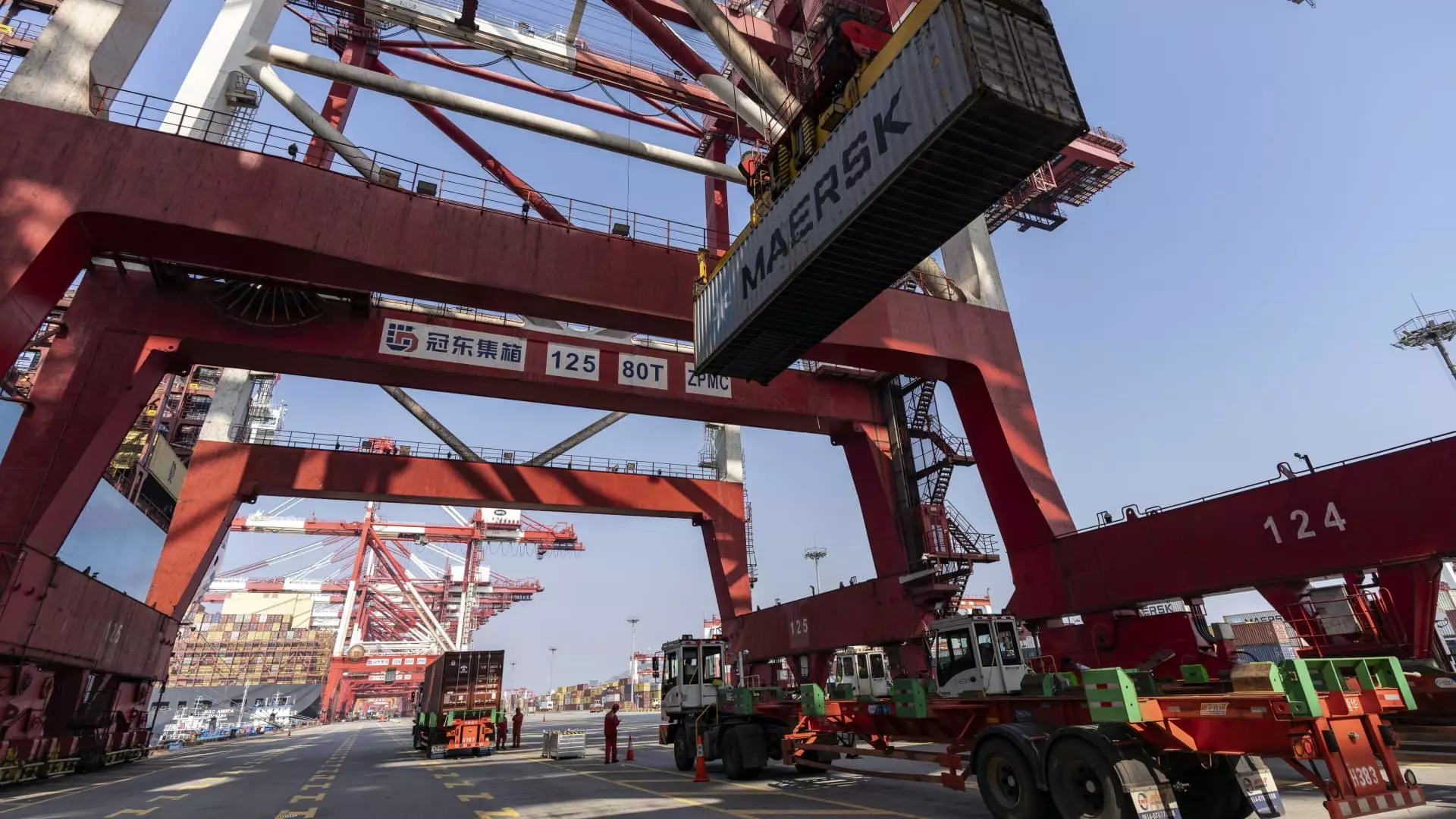In the context of global economics, China has long stood as a pivotal player, often characterized by its robust export-driven growth. However, recent customs data released for September has unveiled troubling signs, as both exports and imports fell short of market expectations. With exports recorded at a modest increase of 2.4% compared to last year and imports only eking out a 0.3% growth, the data has raised serious questions about the future trajectory of the world’s second-largest economy. Analysts had anticipated a more vibrant growth of around 6% for exports and 0.9% for imports, putting further scrutiny on a sector that has historically been a linchpin for China’s economic stability.
The trade data signifies more than just disappointing numbers; it points toward deep-rooted issues afflicting the Chinese economy. In recent years, China’s economic landscape has been fraught with challenges including sagging consumer spending and a plummeting real estate market. Such factors contribute to a sluggish domestic economy, dampening the potential for vibrant export activity. According to Zhiwei Zhang, the president and chief economist at Pinpoint Asset Management, the climate of heightened trade tensions, especially between China and major Western economies, could hamper growth prospects for Chinese exports as 2024 approaches. The U.S. and EU’s imposition of tariffs on Chinese goods, particularly electric vehicles, threatens to curtail the growth that has been traditionally relied upon.
An examination of China’s trade partners reveals a complex economic interplay. While exports to the United States edged up by 2.2%, imports from the U.S. were markedly higher, increasing by 6.7%. This could reflect China’s growing dependence on American goods despite rising tariffs, revealing a paradoxical trade relationship. Meanwhile, the Association of Southeast Asian Nations (ASEAN) retained its status as China’s largest regional trading partner, with a notable 5.5% growth in exports and a 4.2% increase in imports. The dynamics presented by these trading patterns highlight both opportunities and vulnerabilities within the Chinese economy.
Simultaneously, trade with other nations like Russia appeared promising, with an impressive 16.6% surge in exports. However, the reduction in imports by 8.4% from Russia may point to a strategic pivot as China seeks alternative energy sources and commodities outside traditional alignments, demonstrating a shift in its trade strategy in light of geopolitical tensions.
Looking deeper into the dataset, specific sectors have shown varying performance levels. China’s exports in vehicles experienced a deceleration, indicating a cooling off from previous highs, while categories such as shoes, toys, and smartphones saw declines in export numbers. Conversely, certain sectors thrived; home appliances, integrated circuits, and maritime vessel exports showed encouraging growth statistics. Such discrepancies reflect underlying trends in consumer preferences and technological advancements, as some sectors become saturated while others offer expansion opportunities.
Moreover, the decline in crude oil imports, which plummeted by 10.7%, is particularly telling. This reduction underscores the challenges arising from weakened domestic demand. Substantial decreases in energy consumption could imply a broader economic slowdown while simultaneously influencing global energy markets.
Consumer Confidence and Economic Outlook
As these trade figures unfold, they intersect with the crucial matter of consumer confidence and domestic demand. A recently released consumer price index indicated a meager increase of just 0.1%, marking the slowest growth since early 2021. Even during seasonal events such as the Mid-Autumn Festival and the Golden Week holiday, indicators showed that tourism-related prices fell by 2.1%, which raises alarms about household spending and overall economic health.
In light of these developments, the Chinese government has hinted at forthcoming fiscal stimuli; however, there remains a deficit regarding concrete fiscal policies that could bolster investor confidence. With third-quarter GDP data on the horizon, expectations are mixed, and market sentiment remains cautious as stakeholders await the true measure of recovery.
The September trade data casts a shadow over China’s economic prospects. With an array of challenges including diminished export growth, geopolitical tensions, and soft domestic demand, stakeholders must navigate uncertain waters. Policymakers face the critical task of implementing effective measures to revitalize the economy while stabilizing trade relationships. The coming months will be pivotal in determining whether China can reestablish itself on a path of sustainable growth amidst a shifting global landscape.

Leave a Reply